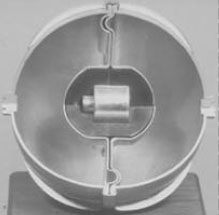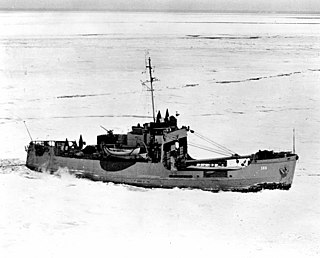
Johnston Atoll is an unincorporated territory of the United States, under the jurisdiction of the United States Air Force (USAF). The island is closed to public entry, and limited access for management needs is only granted by a letter of authorization from the USAF. A special use permit is also required from the United States Fish and Wildlife Service (USFWS) to access the island by boat or enter the waters surrounding the island, which are designated as a National Wildlife Refuge and part of the Pacific Islands Heritage Marine National Monument. The Johnston Atoll National Wildlife Refuge extends from the shore out to 12 nautical miles, continuing as part of the National Wildlife Refuge System out to 200 nautical miles. The Pacific Remote Islands Marine National Monument extends from the shore out to 200 nautical miles.
Incapacitating agent is a chemical or biological agent which renders a person unable to harm themselves or others, regardless of consciousness.

From 1948 to 1975, the U.S. Army Chemical Corps conducted classified human subject research at the Edgewood Arsenal facility in Maryland. These experiments began after the conclusion of World War II, and continued until the public became aware of the experiments, resulting in significant outcry. The purpose was to evaluate the impact of low-dose chemical warfare agents on military personnel and to test protective clothing, pharmaceuticals, and vaccines. A small portion of these studies were directed at psychochemical warfare; grouped under the title "Medical Research Volunteer Program" (1956–1975), driven by intelligence requirements and the need for new and more effective interrogation techniques.
The United States biological weapons program officially began in spring 1943 on orders from U.S. President Franklin D. Roosevelt. Research continued following World War II as the U.S. built up a large stockpile of biological agents and weapons. Over the course of its 27-year history, the program weaponized and stockpiled seven bio-agents — Bacillus anthracis (anthrax), Francisella tularensis (tularemia), Brucella spp (brucellosis), Coxiella burnetii (Q-fever), Venezuelan equine encephalitis virus, Botulinum toxin (botulism), and Staphylococcal enterotoxin B. The US also pursued basic research on many more bio-agents. Throughout its history, the U.S. bioweapons program was secret. It was later revealed that laboratory and field testing had been common. The official policy of the United States was first to deter the use of bio-weapons against U.S. forces and secondarily to retaliate if deterrence failed.

USS George Eastman (YAG-39), a "Liberty-type" cargo ship, was laid down under Maritime Commission contract on 24 March 1943 by Permanente Metals Corp., Yard 2, Richmond, California; launched on 20 April 1943; sponsored by Mrs. Ann Troutman; and delivered under charter from War Shipping Administration to Pacific-Atlantic Steamship Co., Vancouver, Washington, on 5 May 1943.

Project 112 was a biological and chemical weapon experimentation project conducted by the United States Department of Defense from 1962 to 1973.

The Operational Test and Evaluation Force (OPTEVFOR) is an independent and objective agency within the United States Navy for the operational testing and evaluation (OT&E) of naval aviation, surface warfare, submarine warfare, C4I, cryptologic, and space systems in support Navy and Department of Defense acquisition programs.

The M139 bomblet was an American sub-munition designed for use in warheads as a chemical cluster munition. Each spherical bomblet held 1.3 pounds (590 g) of sarin nerve agent.

Operation LAC was a United States Army Chemical Corps operation which dispersed microscopic zinc cadmium sulfide (ZnCdS) particles over much of the United States and Canada in order to test dispersal patterns and the geographic range of chemical or biological weapons.
The M143 bomblet was a biological cluster bomb sub-munition developed by the United States during the 1960s. The spherical bomblet was the biological version of the Sarin-filled M139 chemical bomblet.

The Deseret Test Center was a U.S. Army operated command in charge for testing chemical and biological weapons during the 1960s. The Deseret was headquartered at Fort Douglas, Utah, a former U.S. Army base.
The M138 bomblet was a sub-munition of the U.S. chemical weapon, the M43 BZ cluster bomb. The bomblet contained BZ, an incapacitating agent and was developed with the M43 in 1962. The M138s, along with all other U.S. BZ weapons were destroyed during the 1980s.

The MC-1 bomb was the first U.S. non-clustered air-dropped chemical munition. The 750-pound (340 kg) MC-1 was first produced in 1959 and carried the nerve agent sarin.

The 267th Chemical Company was a military unit of the U.S. Army Chemical Corps responsible for the surety of chemical warfare agents dubbed "RED HAT" deployed to the Islands of Okinawa, Japan and subsequently Johnston Atoll in the Pacific Ocean. A recently discovered Army document reveals that the true mission of the 267th Chemical Company was the operation of the Okinawa deployment site as part Project 112. Project 112 was a 1960s biological warfare field test program that was conducted by the Deseret Test Center. Okinawa is not listed as a test site under Project 112 by the U.S. Department of Defense.

Granville S. Hall was a Liberty ship named after Granville S. Hall. She was built at the J.A. Jones Construction, Panama City, Florida, and launched in 1944, to serve as a civilian cargo ship. In 1953 she was acquired by the United States Navy for use as a miscellaneous auxiliary service craft under the designation YAG-40. As YAG-40 she took part in Operation Castle before being laid up again in 1957. Reactivated in 1962, she was commissioned as Granville S. Hall (YAG-40) and participated in Project SHAD and Project 112. She was scrapped in 1972.
Operation Night Train was part of a series of chemical and biological warfare tests overseen by the Deseret Test Center as part of Project 112. The test was conducted near Fort Greely, Alaska from November 1963 to January 1964. The primary purpose of Night Train was to study the penetration of an arctic inversion by a biological aerosol cloud. The test's first purpose was to study the downwind travel and diffusion of this cloud when disseminated into different arctic meteorological regimes. All documents about Night Train were considered classified by the US military until 2002, when the Department of Defense (DOD) released medically relevant information of all the chemical and biological warfare agent tests conducted under Project 112.
The United States Biological Defense Program—in recent years also called the National Biodefense Strategy—refers to the collective effort by all levels of government, along with private enterprise and other stakeholders, in the United States to carry out biodefense activities.

USCGC Basswood (WLB-388) was an Iris-class buoy tender belonging to the United States Coast Guard launched on 20 May 1943, and commissioned on 12 January 1944.

Herbicidal warfare research conducted by the U.S. military began during the Second World War with additional research during the Korean War. Interest among military strategists waned before a budgetary increase allowed further research during the early Vietnam War. The U.S. research culminated in the U.S. military defoliation program during the Vietnam war known as Operation Ranch Hand.

USS Moctobi (ATF-105) was an Abnaki-class of fleet ocean tug. She served in World War II, Vietnam, and Korea, the last two of which she received battle stars. She was scrapped in 2012.












